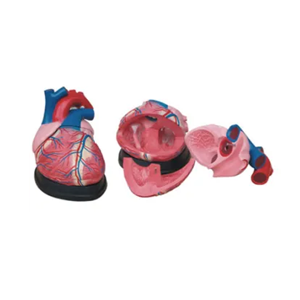Welcome to visitShanghai Chinon medical Model & Equipment Manufacturing Co., LTD
Anatomical models of the heart play a crucial role in understanding heart disease. It is not only an intuitive teaching tool, but also a window to deeply explore the mysteries of the heart, which greatly promotes our understanding and diagnostic ability of heart diseases.
First, the anatomical model of the heart, through its reduced structure, allows us to clearly see every detail of the heart. From the external shape to the internal structure, from the distribution of the atria ventricles to the position and shape of the valves, the model is presented one by one. This intuitive display enables learners to quickly establish a three-dimensional cognition of the heart structure, laying a solid foundation for subsequent learning and understanding.

In the process of understanding heart disease, models have played an irreplaceable role. Through the model, we can observe the abnormal changes in the heart structure of patients with heart disease, such as the thickening of the ventricular wall, the enlargement of the heart chamber, and the narrowing or incomplete closure of the valve. These changes are often closely related to a specific type of heart disease, and by observing and analyzing them, we can initially determine which type of heart disease a patient may have.
In the field of teaching and scientific research, it is an indispensable teaching aid. It can help medical students to master the knowledge of cardiac anatomy faster and improve their clinical practice ability. At the same time, it also provides an ideal platform for researchers to study heart disease, which helps to promote the progress and development of the field of cardiology.
In summary, cardiac anatomical models play an important role in helping us understand heart disease. With its intuitive and vivid display, it enables us to have a deeper understanding of the structure and function of the heart, and better understand the pathogenesis and treatment principles of heart disease. Therefore, in medical education and clinical practice, we should make full use of the cardiac anatomical model as a valuable resource to improve the level of diagnosis and treatment of heart disease.
|
NEXTпјљSurface vessel ligation hemostasis model: test field before combat
LASTпјљCan a child CPR simulator be your 'First aid instructor'? |
Return list |